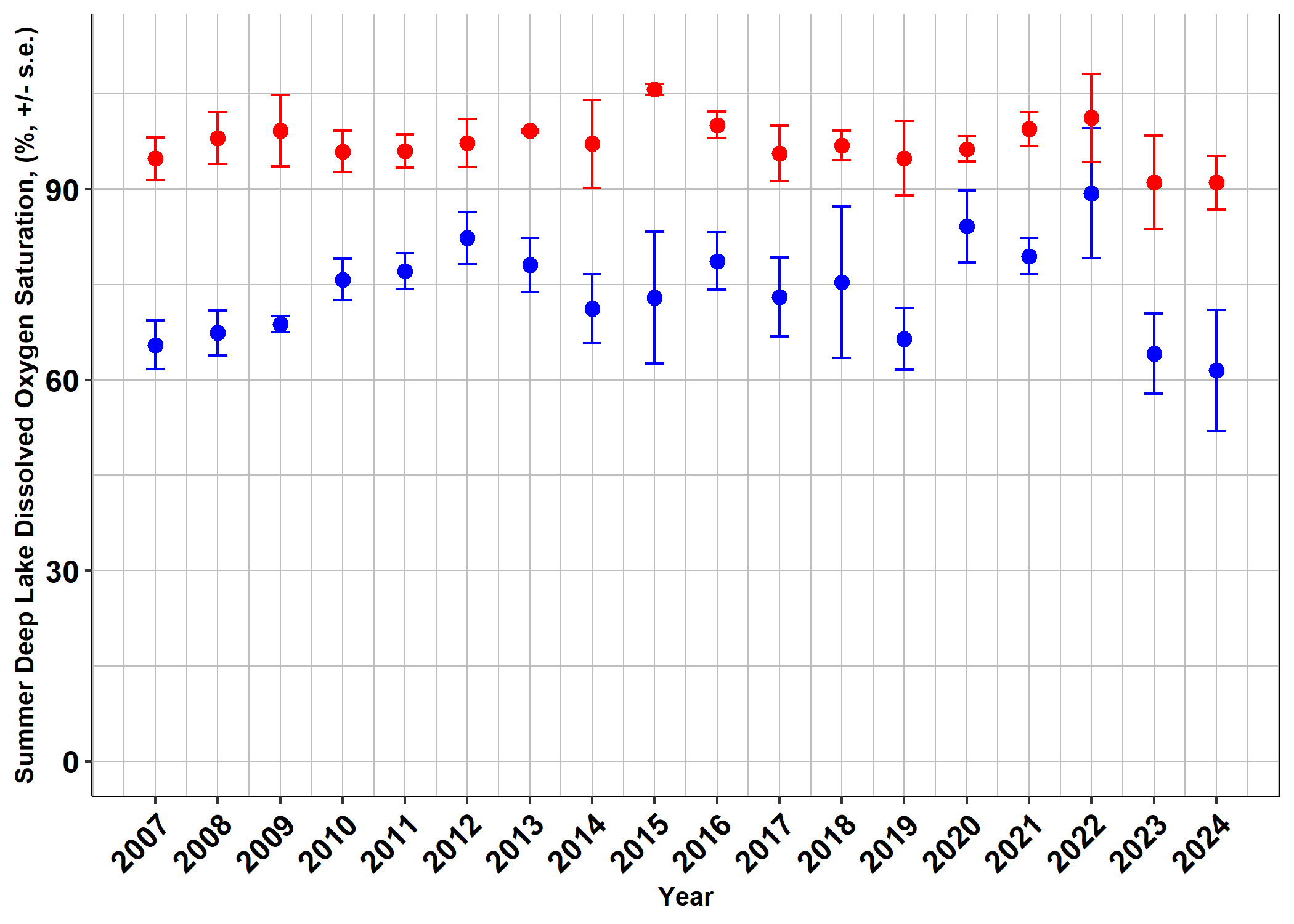Since 2007, WLI has sampled Whitefish Lake monthly, taking water samples and water sensor data at two points in the lake. One sample point is near the shallower south end of the lake, and another is at the deepest part near the north end of the lake. Below are summary graphs using yearly average data from both sampling locations in June, July, and August. Each graph shows yearly average and error bars representing standard error of the yearly average. Overall, due to efforts from the Whitefish community and WLI, the lake remains relatively low in nutrients and high in water clarity.
New in 2025, WLI has created Water Quality Standards for Whitefish Lake. Standards represent the threshold, or not to exceed value, to maintain lake health. The standards were developed using both historical Whitefish Lake data and established water quality standards for Flathead Lake. These are not regulatory standards. Rather, the standards inform the Whitefish community about the health of their lake and will drive WLI’s research and outreach efforts. Yearly variation in the data is to be expected in natural systems. However, should a variable fail to meet a standard for three consecutive years, WLI would consider this a significant lowering of Whitefish Lake’s water quality and cause for immediate action.
These standards apply to water clarity (Secchi), Total Phosphorus, Total Nitrogen, and Chlorophyll-a. They are marked by a red dotted line. To find out more about lake health click on the water quality variables below.
Water Clarity (Secchi)
Water clarity is an important variable for both water health, aesthetic, and economic value of Whitefish Lake. Secchi is measured by lowering a black and white disk into the water until it disappears, that depth is then marked as the Secchi depth. Thus, the best water clarity creates the deepest Secchi depths. Whitefish Lake has maintained consistently high water clarity and does not have a trend of decreasing water clarity. The long-term average Secchi depth is 23 ft. The Water Quality Standard WLI has set for Secchi is 17 feet, anything less than 17 feet for three consecutive years does not meet the water quality standard.

Chlorophyll
Chlorophyll is a pigment within algae, and it is used as a proxy to measure lake algae production. The long-term average for chlorophyll in Whitefish Lake is 1.72 ug/L. In the graph below the deep sampling site is indicated in blue, and the shallow sampling site is indicated in red. The Water Quality Standard set for Chlorophyll-a in Whitefish Lake is 2.72ug/L, and three consecutive years with the annual mean above this level does not meet the standard.

Total Nitrogen
Nitrogen is a nutrient used in algal production and high levels of nitrogen can often result in algal blooms. Increases in nutrients such as nitrogen are often due to human influence. Whitefish lake has a total nitrogen long-term average of 79 ug/L. The Water Quality Standard WLI has set for total nitrogen is 95 ug/L, anything above this level for three consecutive years does not meet the water quality criteria.
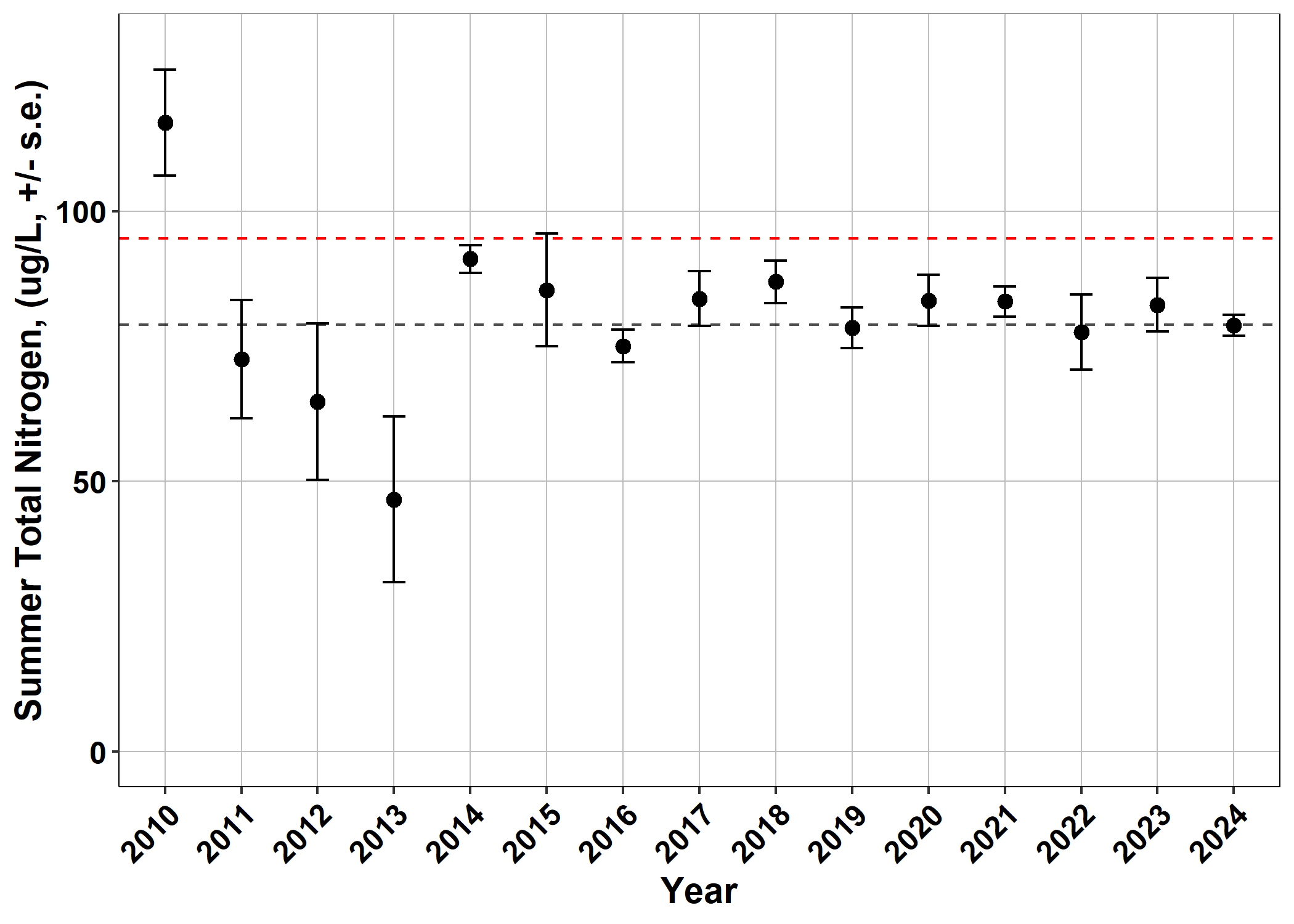
Total Phosphorus
Phosphorus is a nutrient used in algal production and can often come from human driven sources such as septic leachate, fertilizer, detergents, or soil erosion. The long-term average for phosphorus in Whitefish Lake is 4 ug/L. The Water Quality Standard set for total phosphorus is 5 ug/L. Any annual mean data above this level for three consecutive years does not meet this standard.
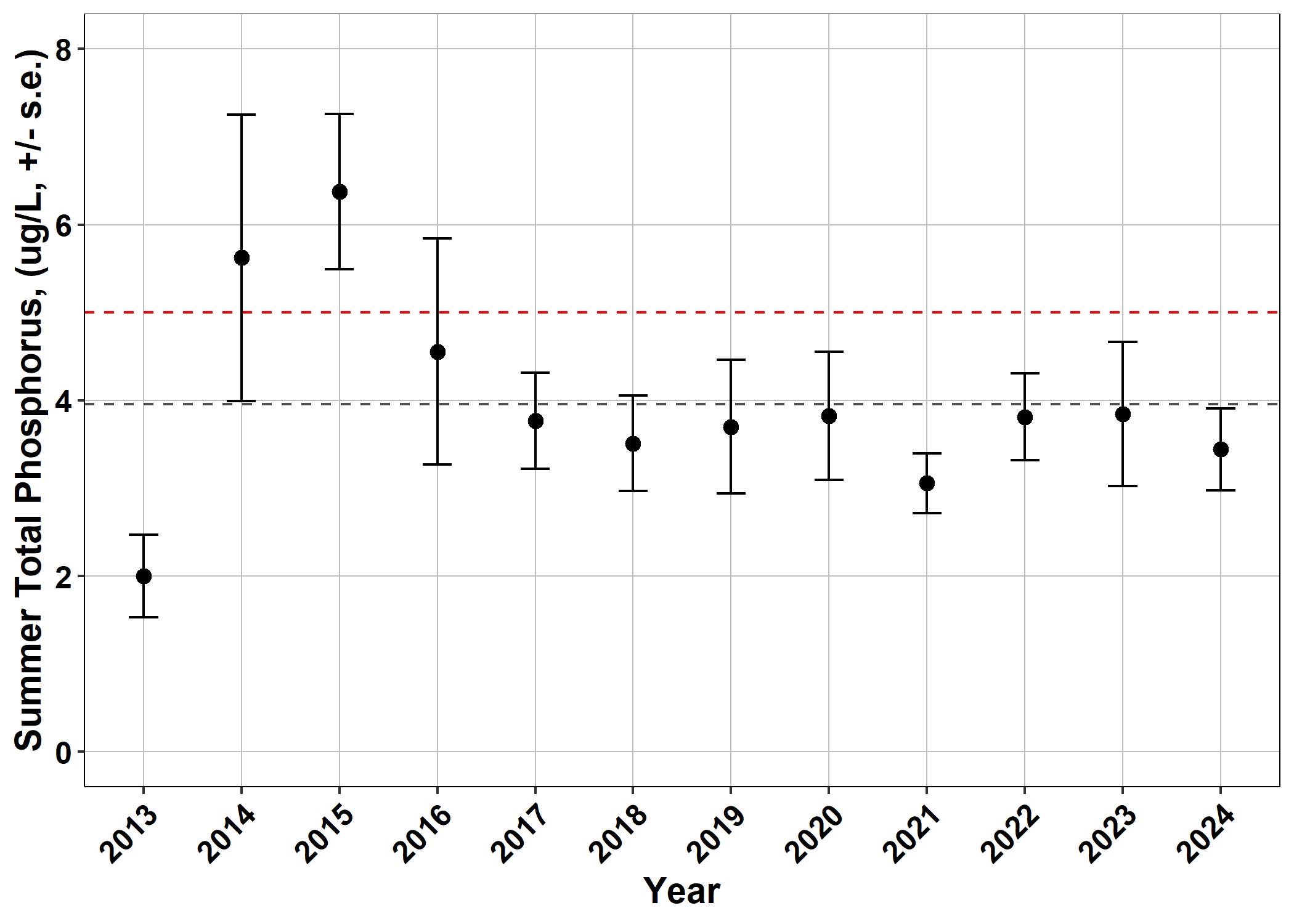
Surface Temperature
The long-term average surface temperature is 63 degrees. Higher lake surface temperatures can lead to more algal production.
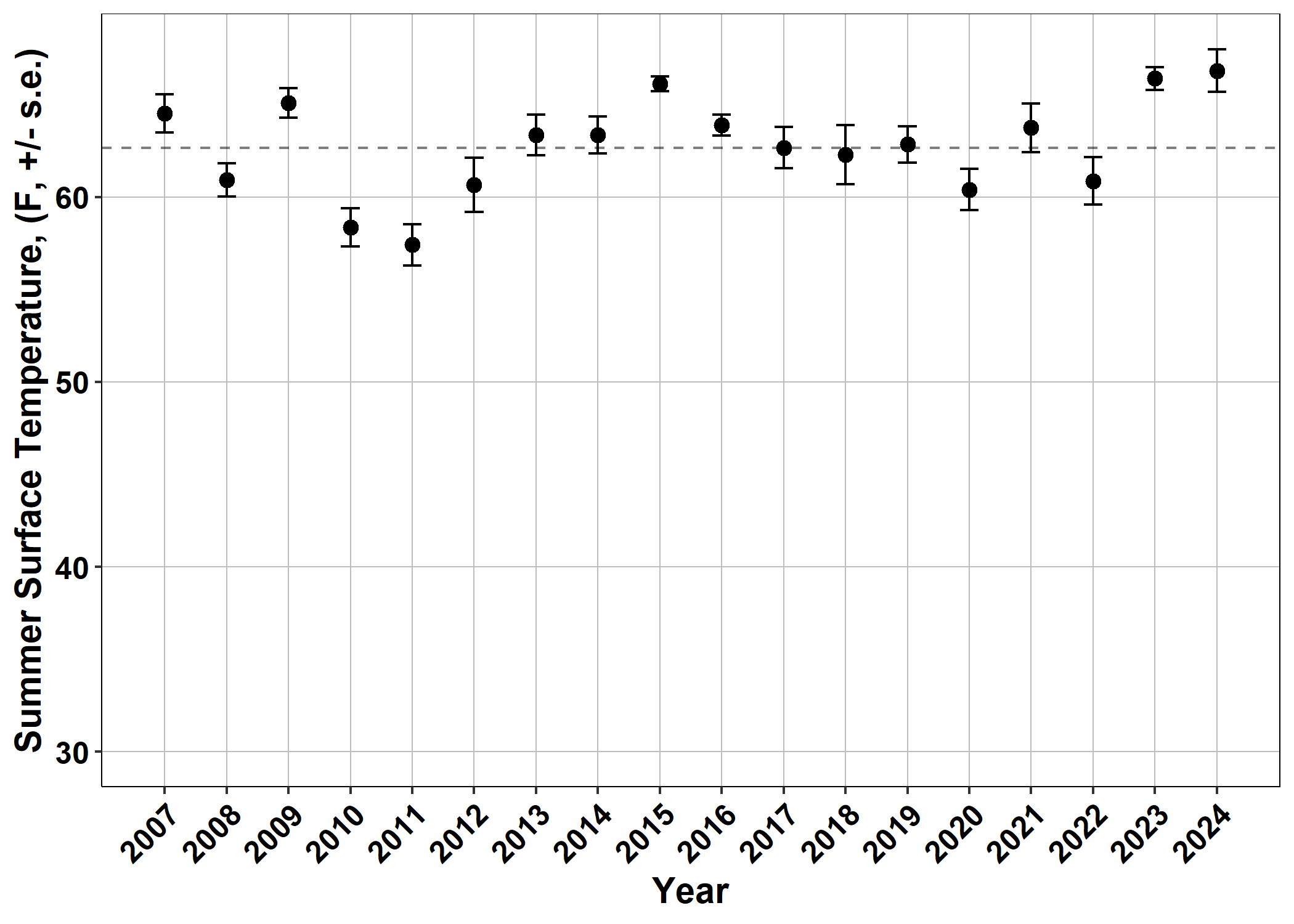
Deep Lake Temperature
This graph shows the water temperature at the bottom of the lake. This is the coldest area of the lake and important fish habitat. It is important to monitor this area as rising temperatures may endanger this critical habitat. In the graph below the deep sampling site is indicated in blue, and the shallow sampling site is indicated in red.
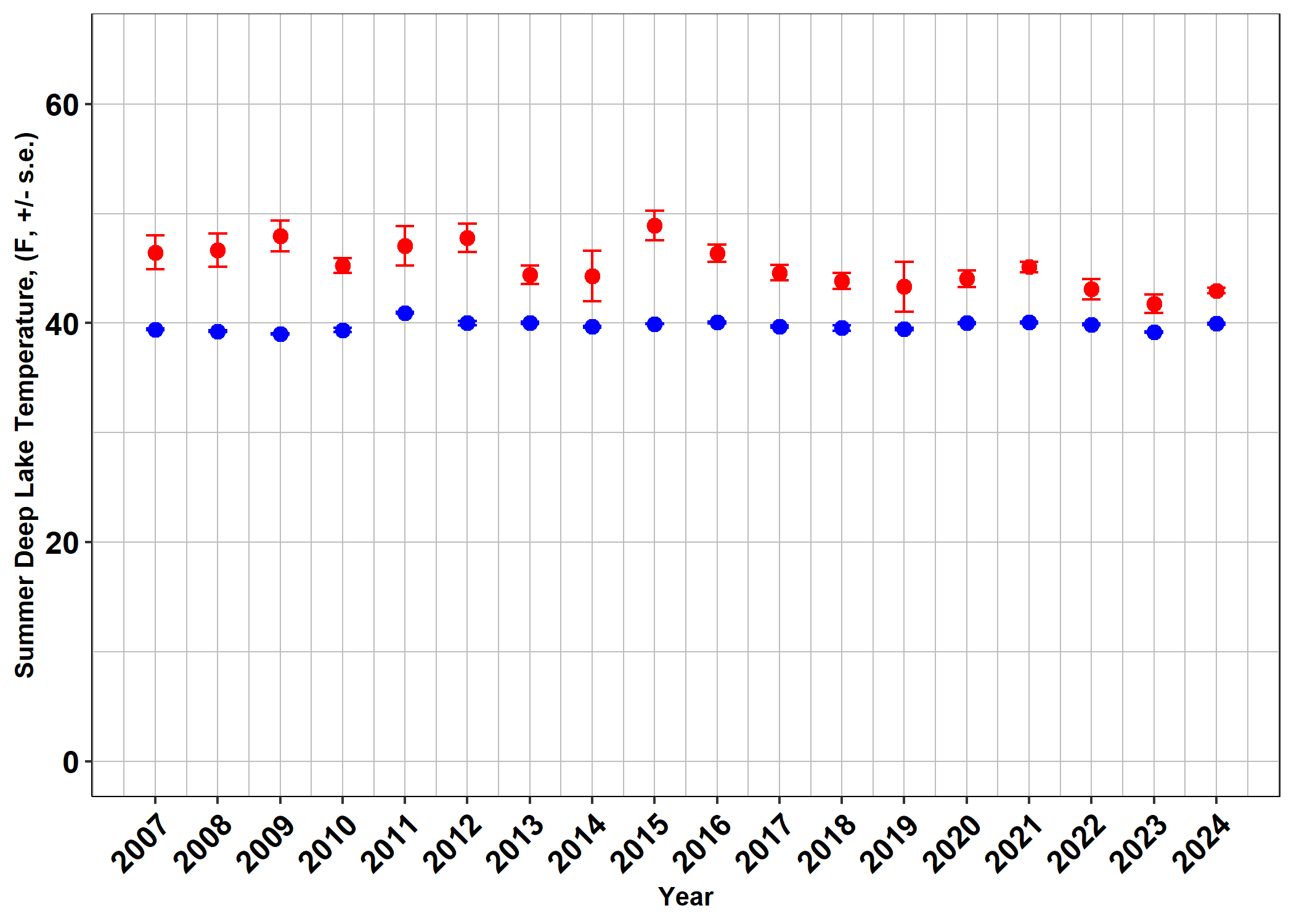
Deep DO
Dissolved oxygen at the bottom of the lake is important for fish habitat. In many lakes due to longer and warmer summers in deep waters, dissolved oxygen is decreasing. In Whitefish Lake dissolved oxygen levels are remaining high. For both sites combined, the summer average of dissolved oxygen saturation is 85%. In the graph below the deep sampling site is indicated in blue, and the shallow sampling site is indicated in red.
